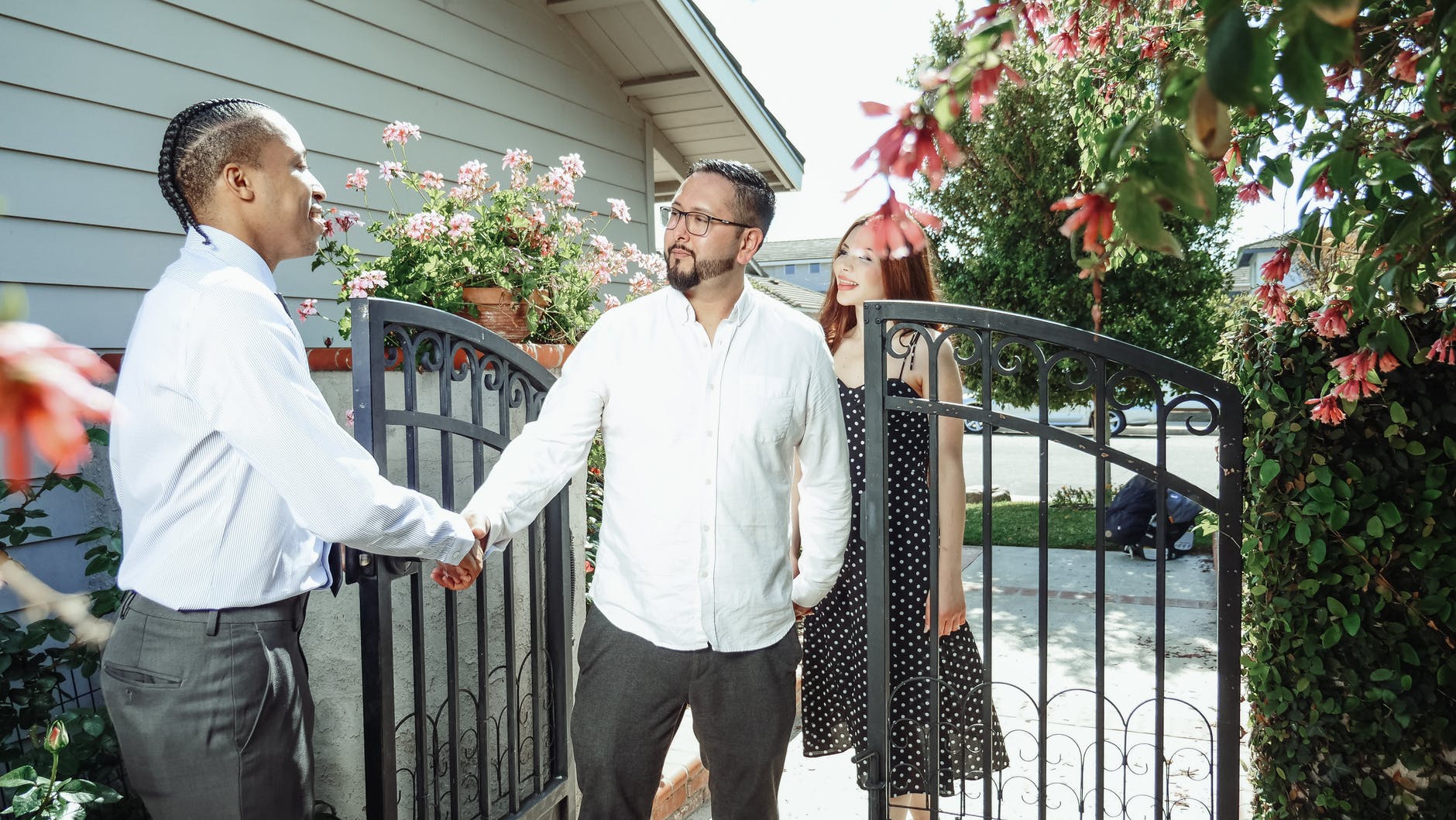How to Become a Landlord
Karen and Keith Anderson have never felt better about their finances. They’re sitting on more than $2 million worth of real estate, and they just gained thousands of dollars a year in passive income. And get this: it all happened by accident.
The Andersons’ financial fortune was made when they became landlords, but it wasn’t something they were planning on. Two years ago, they were regular homeowners trying to sell their three-bedroom Okanagan, B.C., ranch-style home. They bought it back in 2007 for $750,000, but with two growing children, they were already running short of space. The problem was, they were trying to sell in 2009: the economy was tanking and local housing prices were falling rapidly. The Andersons (we’ve changed their names to protect their privacy) realized that they would have to sell for at least $50,000 less than they paid.
Rather than taking the hit, they decided to keep the old house and rent it out. In order to pay for their new place — a $1.6-million, 3,000-square-foot custom home just 15 minutes away from their old place — they had to take out two mortgages. The first was a $315,000 second mortgage on their old ranch home for the down payment, plus a new $700,000 mortgage on the new place. (The rest of the money to buy the new home came from stock market investments.) It was a gutsy move, but so far it’s working out very well. If you’re interested in renting out your old place rather than selling the next time you move, read on and I’ll tell you how.
How to Turn Your Old Home Into An Investment Property
There are several things you need to consider when deciding whether to keep your old place as a rental or sell it. The first is whether you’ll actually make money. In other words, whether your investment property will be cash-flow positive.
To do this calculation you first need to find out how much you could rent your old place for. Scan reports released by your local real estate board and look through sites that offer free rental listings, such as Craigslist or Kijiji.ca. Or you can do what the Andersons did and get advice from a local real estate agent and property manager.
Once you know what you can expect in monthly rental income, you’ll need to add up the costs of carrying the property. The largest will likely be its mortgage payments. But don’t forget other operating costs such as insurance, taxes, maintenance and a contingency fund to cover advertising, administration and bad debts, like tenants skipping out.
When they ran the numbers, the Andersons figured they’d get a gross income of $32,400 per year from renting out their rancher. The total costs of keeping and maintaining it added up to $24,400 a year. Those costs included a monthly $1,500 payment on the $315,000 second mortgage to cover the down payment on the new place, plus $285 per month on the rancher’s first mortgage, which they took out when they originally bought it. They also decided to hire a property manager at a cost of $250 per month. (If you don’t hire a property manager, include at least $800 per year for each rental unit to cover maintenance costs.) In their case, that still left about $8,000 a year to cover insurance, possible vacancies and, of course, their profit.
Mortgages On Rental Properties Are Different
When considering borrower applications, mortgage lenders can be far more stringent. This is due, in part, because the landlord or the owner will not be occupying the property and the tenants can adversely impact the value of the rental property.
There are a few other differences to expect when applying for a mortgage on a rental property.
More Down Payment is Required
The minimum down payment required for a mortgage depends on the type of rental property you’re planning to acquire. When investing in a single-family home, you’ll have to prepare at least 20% of the total cost of the property as your down payment and this minimum down payment can climb higher depending on the property you wish to purchase, your credit score, your source (and consistency) of income and how much debt you carry.
Generally, you can get better loan terms if you pay a higher down payment. However, most traditional lenders will only accept around 20% to 25% down payment for your mortgage.
Be Sure Your Credit Score is Good
Credit lenders will use your credit score as a basis on your ability to pay off a mortgage. This is one of the reasons why people with low credit scores often get denied when applying for a mortgage.
If you want to get a mortgage for your rental property, check to make sure your credit score is high enough to have your mortgage application considered by a conventional bank lender or a mono-lender (companies that specialise in mortgages). The last thing you want is to be force to shop the alternative mortgage market — the lenders who offer loans at higher interest rates to those desperate enough to pay more.
You May Not Get the Lowest Mortgage Interest Rate
Unlike applying for a mortgage for standard home loans, expect that interest rates on investment property mortgages are usually higher. Generally, you can expect around 1% to 3% more in interest when you apply for a mortgage for your rental property.
You Will Need Proof of Income
Traditional lenders will require documents to show your proof of income before granting a mortgage for your rental property. Most lenders will expect specific documents, namely two years’ worth of income in the form of tax returns and W-2s forms.
Find the Right Tenants
After finding the right rental property and getting a mortgage to pay for it, you now have to work on finding the right tenants. As a landlord, you need to exert time and effort to find good tenants because welcoming bad ones to your rental property can cause stress and expenses.
While there is no fool-proof screening method for finding tenants, considering certain factors will increase your chances of finding great tenants for your rental property. Following the tips listed below can help you make an educated decision.
1. Pay Attention to the Tenant’s Credit
The inability of a tenant to pay rent on time can result in a landlord-tenant dispute. Fortunately, you can prevent this from happening by looking into the tenant’s credit to determine whether or not they’re financially responsible. If a tenant pays their bills on time, there’s a strong chance that they will also pay their rent on time and in full.
Since getting a credit check has a fee, you can ask your applicants to pay for the credit check.
2. Perform a Criminal Background Check
Criminal information is public record, so make sure that you don’t skip checking any of your applicants’. You just need the complete name and birth date of an applicant to determine if they have been charged with federal or state crimes.
Some applicants will attempt to falsify or hide their criminal records by using another identity. Don’t fall victim to these scams. Ask for at least two valid forms of ID from the applicant.
3. Consider the Stability of the Tenant
Before presenting the landlord tenant agreement form, instruct your applicants to fill out their application form with information pertaining to their prior employment and addresses. The information presented here will give you an idea of the stability of your applicants.
A tenant who moves often will likely continue exhibiting such behavior, and you’ll be left with another vacancy after a few months. A tenant who often switches jobs after a couple of weeks or months might not be able to pay their rent in full on time.
Use the Right Paperwork
When you become a landlord, you need to use and keep the right paperwork. Record-keeping is vital as a landlord because it protects you from legal issues, helps you deal with tax responsibilities, and promotes transparency between you and your tenants.
Every landlord should use and file these documents:
1. Rental Application
The rental application is the first form you’ll hand out to any applicants to determine their qualifications. Using a rental application is a must as it reduces the risk of accepting the wrong or irresponsible tenant in your rental property.
2. Lease or Rental Agreement
A lease or rental agreement defines the responsibilities of both the landlord and tenant. Also known as the landlord tenant agreement, this document can become your ally when disputes or litigations happen.
3. Pet Policy Agreement
If you decide to welcome pets in your rental property, you need to have a documented pet policy on file. Tenants who bring their pets should understand the content of this document and sign before they begin their tenancy.
Generally, your pet policy agreement should include expected pet owner responsibilities and an additional pet deposit.
4. Welcome Letter
A welcome letter is usually written in a friendlier tone and provides information necessary for tenants once they start to live in your rental property. Your welcome letter should include information on how tenants can set up utilities, how they can get renter’s insurance, and how to use the laundry unit or room.
Treat Your Rental as a Business
In a perfect world, every single landlord treats their rental property simply as a business process. However, with personal attachments, tenant difficulties, and maintenance problems, a rental property investment can eventually turn into an emotional morass.
If you want to succeed as a landlord, you need to develop an objective attitude to ensure that you can easily cope with stressful situations caused by owning a rental property.
Consider the following practices for you to effectively treat your rental as a business:
- Even if you don’t know what will transpire, treat your rental property as a long-term investment.
- To reduce vacancy rates, remain realistic when setting rental prices.
- Don’t forget to practice preventive maintenance. This can eliminate major repairs in the long run, allowing you to save money.
- Be ready to respond to all sorts of emergencies. As a landlord, expect that you’ll have to manage tenant problems, natural disasters, and long-term maintenance.
- Don’t rent out your property to any tenant “just” to generate passive income. Accepting the wrong or irresponsible tenant in your rental property can generate unexpected headaches and expenses.
- Invest in professional services whenever necessary. Although it can be tempting to manage problems on your own, you’ll need to hire a professional for your accounting, legal, and maintenance needs.
- Even the best tenants can experience problems that affect their ability to pay rent. Instead of reacting emotionally and sending an eviction notice on the spot, remain objective when faced with this situation.
Responsibilities of a Landlord
To ensure that your tenants stay in your property long-term and your investment continues to generate income, you need to fulfil the responsibilities of a landlord. Fulfilling these responsibilities should be at the top of your to-do list so you can gradually build a name for being a reputable landlord in your area.
You’ll have to fulfil many responsibilities when you become a landlord, namely:
1. Keeping The Rental Property In Good Condition
One of the most important responsibilities you’ll have as a landlord is to keep your rental property in good condition. This means that you should repair and maintain the property, obey the regulations set by city and provincial health, and follow maintenance and safety standards.
2. Maintaining Common Areas
If there are common areas in your rental property, you are expected to clean and maintain these, as well. Generally, you should regularly clean and pay for repairs required in your yards and hallways, along with removing snow from your walkways and driveways.
3. Giving Access To Vital Services
Since your tenants will need a lot of things to live comfortably every day, it’s up to you as a landlord to provide access to these needs. When you become a landlord, you should give your tenants access to hot and cold water, heat and fuel, and electricity.
4. Providing Documents
Before your tenants start to live in your rental property, you should provide them with essential documents, such as a copy of the lease or tenancy agreement, and a written notice of your legal address and name. You must provide these upon request for free.
5. Maintaining a Pest-Free Environment
Pests carry diseases and cause damage to your property, which is why you should always prioritize maintaining a pest-free environment. Aside from making sure that your tenants are healthy and safe, this will also keep your rental property in stellar condition.
Learn Your Province’s Landlord Tenant Act
The landlord tenant act is a part of the common law that indicates the duties and rights of landlords and tenants. The landlord tenant act includes the element of both contract law and real property law.
To give you an idea of how the landlord tenant act works, consider the points below:
Landlord duties include:
- Covenant of quiet enjoyment
- Duty to deliver possession
- Duty to provide essential services
- Implied warranty of habitability
Tenant duties include:
- Duty to operate
- Duty to pay rent
- Duty to preserve the premises
Aside from stating the duties and responsibilities of landlords and tenants, the landlord tenant act also details out specific protections for landlords and tenants.
As a landlord, you can protect yourself from tenants through any of these remedies:
- Eviction
- Forfeiture
- Monetary damages
- Self-help
- Subsidized and public housing
Tenants, on the other hand, can protect themselves through any of these remedies:
- Breach of covenant
- Constructive eviction
- Money damages
- Retaliatory eviction
However, since the landlord tenant act can vary in every province, it’s best to reach out to your local agencies to learn more. Ideally, you should equip yourself with information about the landlord tenant act before you start renting out your property. This will warrant the legality of your rental business and protect you from paying expensive penalties.
Check Your Insurance
Attaining long-term financial stability is a possibility when you become a landlord but accomplishing this goal can be tough if you’re doing it without landlord insurance. The price and maintenance costs of your rental property are expensive, and operating it without any landlord insurance can cause you to pay more in the long run.
You can better protect your investment and profits by getting landlord insurance before you rent out your property. Comprehensive landlord insurance provides coverage to property damage, lost rental income, and liability protection.
If you want to maximize your landlord insurance, you can also add other riders to your policy. Although these aren’t as vital as the key provisions mentioned in the previous section, these add-ons can save you a lot of stress and money in the future.
Some of the most useful additional coverage you can have under your landlord insurance is guaranteed income insurance, emergency coverage, floor insurance, and additional construction expenses.
Getting landlord insurance is always a must, but you should be financially prepared to pay premiums to experience its benefits. According to reports, the average cost of landlord insurance is about $1,481 a year and can increase if you want to add more coverage to your policy.
Are you cut out to be a landlord?
There’s one more important thing you should think about before taking the plunge, and that’s whether you want the hassle of being a landlord.
When Mike and Joan Gaye moved from their Scarborough bungalow to a downtown Toronto condo, they initially intended to rent out the bungalow and use the income to accelerate their condo payments. But then the Gayes got honest. “I didn’t want my down time to be consumed with tenant complaints,” says Mike. So, the Gayes (we changed their names to protect their privacy) sold their bungalow, and used the money to make a lump-sum payment against their condo instead. Yes, they lost an asset, but they knew that becoming a landlord doesn’t work out when your heart’s not in it.
What about the risks?
When you go from homeowner to landlord, you are becoming a real estate investor. As with any other type of investing, there are risks.
The biggest threat is a drop in local housing prices, a very real possibility in many Canadian cities where the ratio between property prices and rents is currently at an all-time high. As with any leveraged investment, if you borrow money against an asset and the value of that asset drops, then you could get into trouble. You could find yourself in a position where the bank has loaned you more than your property is worth. Even if a mortgage repayment isn’t demanded, it can make refinancing your home impossible, as no lender will offer a mortgage that’s worth more than the house. Other risks include rising interest rates, which could mean higher mortgage payments, and, if you’re paying down the mortgage on the new home out of current earnings, job loss or disability.
The Andersons currently have a massive debt, but so far everything is working out fine. Their local real estate market is much healthier now and they’re no longer even considering selling the rancher. Why should they? It’s earning them money.






